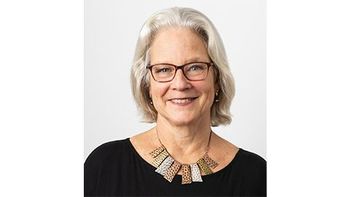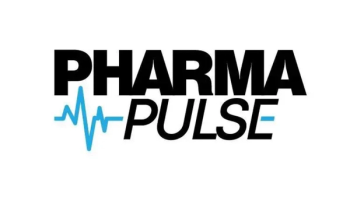Key Takeaways
- Independent PAP foundations reduce legal risks and expand support. Structuring patient assistance programs as independent non-profit foundations helps pharmaceutical companies reduce regulatory and legal exposure while allowing for more holistic, patient-centered support.
- Addressing social drivers of health improves patient outcomes. Independent PAPs can go beyond medication access by addressing broader social needs—such as housing, nutrition, and health education—that significantly impact health outcomes, particularly for underserved populations.
- Operational independence boosts trust and long-term viability. Separating PAPs from commercial entities enhances public trust, provides access to diverse funding sources, and supports sustainable, mission-driven care—despite challenges like funding stability and administrative burden.
Patient assistance programs (PAPs) are vital for uninsured or underinsured patients living in the US and are designed to reduce access barriers to prescribed medications and treatments. Often run by pharmaceutical companies, PAPs provide free medications to patients who meet specific eligibility requirements for each program. As benefits and patient eligibility to federal and state insurance programs continue to evolve, PAP programs are poised to take on even greater importance for vulnerable people seeking access to critical prescription medications in the US.
Given the strict state and federal regulations governing how manufacturers communicate with or support patients, companies face significant legal and regulatory risk when managing PAP programs. In addition, based on the growing body of evidence surrounding the impact of non-medical factors on health outcomes, patients need more than just access to prescription medications to support their health and well-being.
Offering patients greater support
To reduce the legal risk and provide more holistic support for program participants, manufacturers may consider structuring their PAPs outside of their core business models. For instance, establishing a program as an independent 501(c)3 non-profit patient assistance foundation, governed by an independent board of directors, not only legally separates the foundation from the manufacturer but also enables it to explore additional funding opportunities and offerings to better serve patients.
Let me explain.
PAPs are typically managed by several key functional areas. These can include patient services for day-to-day management, compliance, legal, and regulatory affairs to ensure adherence with federal and state requirements, and clinical affairs to ensure that medications are dispensed correctly to eligible patients.
Entwining a PAP within the organization, however, heightens the risk of increased scrutiny to ensure compliance with strict regulatory requirements, including anti-kickback statutes and privacy laws.
While structuring a PAP as a non-profit foundation outside of the manufacturer organization doesn’t absolve it from adhering to legal and regulatory requirements, the structure does create a clearly defined firewall between the program and the commercial organization, focuses the PAP on its nonprofit mission, and provides an independent board of directors to manage its activities.
Assisting marginalized individuals
In addition to addressing regulatory risks, structuring a PAP as an independent foundation outside of the core business and maintaining a true separation of the entities enables it to better support underserved populations.
Rather than focusing exclusively on providing access to prescription drugs supplied by a single manufacturer, independent foundations can explore and identify other opportunities—in terms of products or expanded services—to better support the needs of program participants.
For underserved populations, this could include non-medical factors, including education, social and community support, and access to healthcare. Known as the social drivers of health (SDOH), these non-medical factors have a significant impact on people’s health, well-being, and quality of life. Independent, non-profit foundations have greater flexibility to offer such products and services, such as access to safe drinking water; healthy food options; nutritional education; materials that improve health literacy; disease education; housing and financial assistance connectivity; travel coordination; caregiver support; free durable goods; and connectivity to external organizations that can support patients, all of which may support better outcomes for program participants.
An independent foundation—managed by an independent board and registered as a charitable organization—also enjoys greater flexibility to identify other sources of funding and donations beyond the drug manufacturer that also address various SDOH factors.
Lastly, PAPs that are directly managed by pharmaceutical companies may also struggle with public image issues. Aligning programs with for-profit entities may create the perception that they are an arm of the commercial organization, designed to help the company achieve its financial goals. This leads key stakeholders, including government regulators, healthcare professionals, and patients, to call into question the nature of the relationship and the fundamental mission of the PAP.
Creating a separate, independent patient assistance foundation may help address this negative perception and help to alleviate stakeholder concerns about a possible conflict of interest.
This is not to say that organizing an independent non-profit is easy. Some challenges include:
- Understanding the patient journey. Organizations need that understanding to ensure the eligibility criteria set reflect the unique needs of different patient communities.
- Funding stability. The level of commitment to funding any philanthropic organization often fluctuates, as donor priorities change over time. This can create uncertainty and impact long-term planning for an independent foundation.
- Administrative burden. With limited resources, foundations must handle numerous administrative responsibilities, such as managing day-to-day operations, maintaining board relationships, preparing financial reports, evaluating impact, and sustaining donor relationships.
- Good compliance stewardship. Handling intricate legal and regulatory requirements, such as tax and privacy laws, reporting duties, and adherence to healthcare regulations, can be both demanding and resource intensive.
- Maintaining independence. Maintaining independence can be challenging yet necessary, especially when PAPs need to collaborate appropriately with donors in support of patients, such as in preparation for support of a new product or indication of an already approved product. Independent oversight, such as governance by an independent board composed of members who are not affiliated with donor entities, is crucial for maintaining and enforcing the integrity of independence.
- Long-term impact analysis. To demonstrate value to its donors, an independent foundation must report back and demonstrate it can make an impact, consistent with its philanthropic mission. To do so, the foundation may need to track the contribution its programs have made to improving health disparities while remaining impartial to the manufacturers’ commercial strategies.
These challenges are not insurmountable, and the long-term benefits for the healthcare system are well worth the effort.
As our healthcare system grapples with rapid changes in reimbursement and state-funded support, it is crucial that PAPs adapt to meet patient needs. Given the challenges of this new environment, an organizational structure that enables greater flexibility and managerial independence may provide the framework needed to ensure our most vulnerable individuals have access to the critical treatments they need.
About the Author
Rachel Thorpe, MBA, has more than 21 years of experience in the pharmaceutical industry, including managing the growth and overall strategic direction of patient support programs. She is currently the executive director of the Otsuka Patient Assistance Foundation, Inc.
The opinions expressed in this article are those of the author and do not necessarily reflect the views, policies, or positions of Otsuka America Pharmaceutical, Inc. or the Otsuka Patient Assistance Foundation, Inc.






